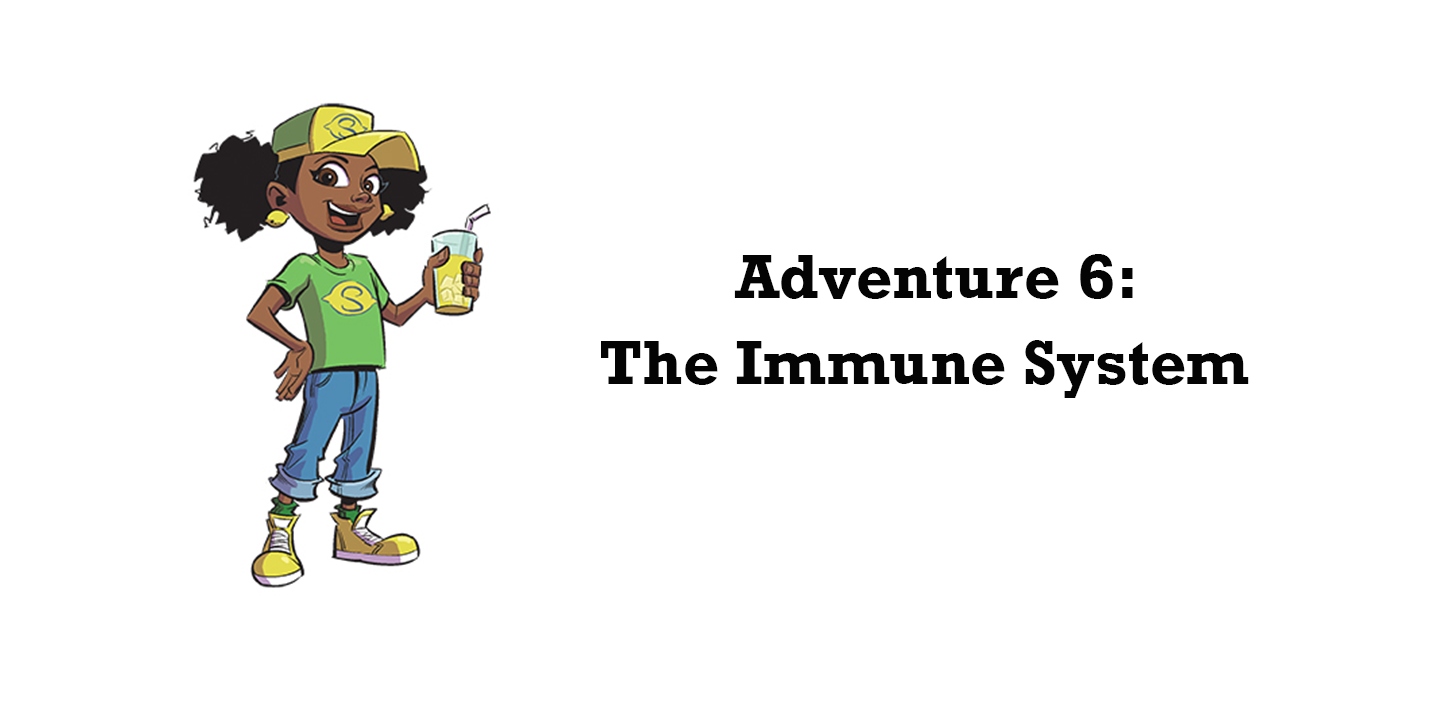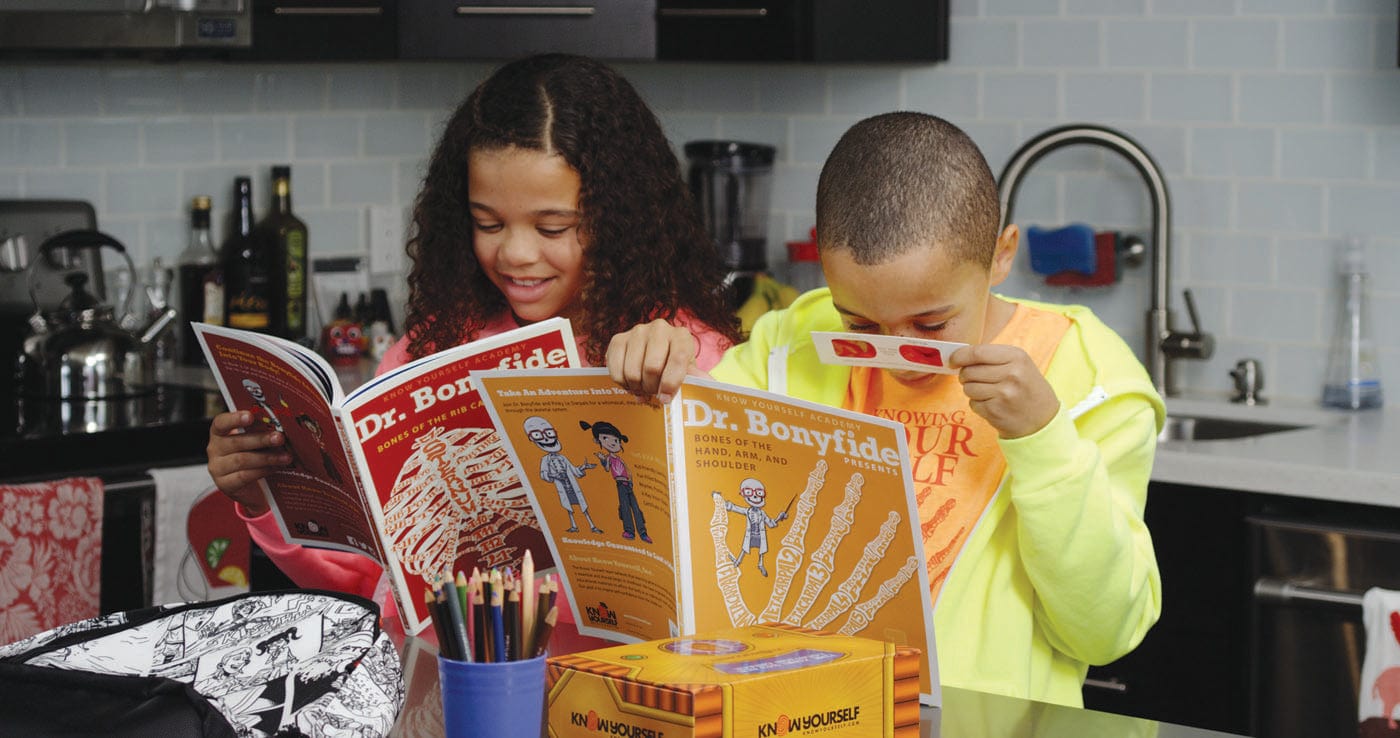
Activity 1: DIY Influenza Virus
Aaaahhh-choo! We’ve all had a cold or flu before, but have you everseen the virus that makes you feel so sick? Turns out, viruses are so tiny that we can only see them under a powerful microscope—they’re nearly 4000 times smaller than a grain of salt! That’s hard to imagine, but we can make a model of an influenza virus to see what it might look like if it were much larger.
Viruses are very simple structures: they are shells made of proteins called capsids which carry instructions (DNA or RNA)* for how to make more copies of themselves, called genomes. Viruses can’t replicate on their own, so they need to sneak into cells of your body and trick them into using thevirus’s instructions to make copies. They have special protein spikes on the outside of the shell that help them get into a host cell and duplicate. Some viruses, like influenza (flu), also have an “envelope” that surrounds the capsid. This is made up of fatty acids called lipids, which help the virus infect cells and replicate.
*DNA and RNA are abbreviations fordeoxyribonucleicacid andribonucleicacid. Try saying them both!
(RNA) RAHY-boh-noo-KLEE-ik
(DNA) dee-OK-si-RAHY-boh-noo-KLEE-ik
Talk about a tongue twister!
- Materials
- Directions
- 2 colors of modeling clay (like Play-Doh)
- Small strips of paper
· Spike materials: colored toothpicks, push pins, or map pins
- Influenza virus contains eight pieces of RNA. Make eight strips of paper to represent influenza’s RNA instructions. (If you want, you can even write instructions on how to duplicate the virus on the strips!)
- Put the RNA inside a sphere of modeling clay. This is the capsid that’s protecting the RNA.
- Add the lipid envelope by wrapping a different color of modeling clay around your capsid.
- Influenza has two types of spikes: one to help attach to host cells, and one to release new copies of the virus from the cell. Select two different shapes or colors of spike materials to insert all around the outside of the envelope.
To make more types of viruses, like norovirus or adenovirus, visit:https://mrc.ukri.org/documents/pdf/build-your-own-virus-activity-pack/
Activity 2: The Virusian Army
This Kingdom was one of peace and prosperity, until the army of Virusia invaded. The years that followed were ones of pain and hardship, but we are a strong people and adapted swiftly. We now have Assets of Battle that even the hideous Virusians cannot defeat. Come meet them!
- Directions
- Word Bank
Check out the Word Bank to see the microcomponents of your immune system (refer to Part 2 of the Adventure Guide,Know Your Immune System, for a review of some microcomponents). Then read the descriptions of the Assets of Battle. Match each Asset of Battle with the microcomponent of the Immune System it best represents.
Assets of Battle
| New Column | New Column |
| Virusian Gauridans | We’re not Virusians, but we’re in charge of guarding against them. When we discovered a hostile army sharing our land, we were the first to act. We built the army, trained the forces, and are in charge of all lines of defense. ___( ← write the letter of the correct microcomponent in this space) |
| Dragon Slayers | When the Virusian Army first attacked, they came by sky, riding fearsome dragons and raining fire upon us. The Guardians took rapid action, built specialized crossbows, and trained us for the sole task of bringing down the Dragon Demons. Now, they’re never a problem. ___ |
| Beacon Keepers | We keep a watchful eye on our territories and raise the beacon at any Harbingers of Virusia. When the Guardians see our beacon, they know the time for battle is nigh. ___ |
| Harbingers of Virusia | We’ve learned to recognize signs of the Virusian Army’s presence. They’re marked by a foul green smoke and the foreboding beat of the barbarian drums. _______ |
| Snare Masters | Sometimes a capture is preferable to a kill. We the Snare Masters are responsible for trapping our enemies in battle ___. There are two types:
|
| Mammoth Fighters | We kill our largest attackers, which we just call Mammoths, because they’ve been too big for the Snare Masters to capture and study. ___ |
| Mercurian Messengers | During the heat of battle, the generals can’t always communicate with the soldiers. We carry messages to ensure everyone is on the same page and reacting appropriately. ___ |
| The Subterranean Passageways | These are underground tunnels to transport supplies and wounded soldiers. ___ |
| The Coat of Arms | We wear this in battle so we don’t mistake one of our own for the Virusians ___ |
Assets of Battle - Answer Key
| New Column | New Column |
| Virusian Gauridans | Lymphocytes |
| Dragon Slayers | Antibodies |
| Beacon Keepers | Basophils |
| Harbingers of Virusia | Antigens |
| Snare Masters | Phagocytes
|
| Mammoth Fighters | Eosinophiles |
| Mercurian Messengers | Cytokines |
| The Subterranean Passageways | Lymphatic System |
| The Coat of Arms | Leukocytes Antigens |
- Eosinophils - Disease fighting white blood cells that kill bacteria and other cells too big to ingest*Say it like this: ee-oh-SIN-oh-filz
- Lymphocytes - White blood cells that are responsible for all acquired immunity. Produce antibodies*Say it like this: LIM-fuh-sites
- Cytokines - Proteins that carry information within the immune system to regulate immune response*Say it like this: SAI-tuh-kinez
- Leukocyte Antigens - Identification molecules on the surface of cells that allow the body to distinguish self from non-self.*Say it like this: LOO-kuh-site AN-tuh-jnz
- Antigens - Any substance the immune system can recognize and thereby trigger an immune response*Say it like this: AN-tuh-jnz
- Lymphatic System - A network that helps the body transport microorganisms and dead/damaged cells*Say it like this: luhm-FA-tuhk
- Antibodies - Proteins produced by white blood cells that neutralize invaders. Each antibody is unique in that it can only neutralize the invader it was made for*Say it like this: AN-tuh-baa-deez
- Basophils - Cells that release substances to attract white blood cells to an area in which they’re needed*Say it like this: BAY-suh-filz
- Phagocytes - Cells that ingest and kill invading microorganisms. Include neutrophils and macrophages*Say it like this: FA-guh-sites
- Macrophages - Phagocytes that ingest bacteria and foreign cells to assist lymphocytes in recognizing microorganisms and unwanted substances*Say it like this: MA-crow-fay-jiz
- Neutrophils - Phagocytes that ingest and kill bacteria or foreign cells.*Say it like this: NOO-truh-filz









Leave a comment (all fields required)